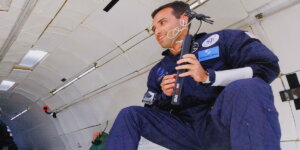
Adjunct Associate Professor and JPL Manager Ryan Park. Photo/Ryan Park
New results from NASA’s Dawn mission have given scientists insight into what lies beneath the volatile-rich surface of dwarf planet Ceres. By analyzing the motion of the Dawn spacecraft while it orbited the protoplanet, Gravity Science Team Lead Ryan Park was able to determine that Ceres has a “weak interior” with a density much lower than rocky bodies in our solar system. “Nature” published an article detailing these findings in September.
Park, supervisor of the Solar System Dynamics group at NASA’s Jet Propulsion Laboratory and adjunct associate professor in the Department of Astronautical Engineering at USC Viterbi, works to measure orbital characteristics of all the objects in the solar system. These characteristics, including trajectory path, rotational axis, body shape and gravitational field, are determined from data collected by spacecraft and by ground observers.
“The gravity influences the orbit of the spacecraft. So by accurately tracking the motion of the spacecraft, you can determine what the gravity is,” Park said. “By comparing the gravity and the shape data, you can infer what the interior would look like.”
The group’s main role is to maintain and improve orbital data of all planetary objects, which include planets, natural satellites, asteroids and comets. Working with the Gravity Recovery and Climate Experiment (GRACE) mission, the group has been observing the gravitational changes of the Earth, which can be used as indicators for alterations in the planet’s climate. For example, a change in the gravitational field at the poles could reveal how much ice is melting.
Park has been with the Solar Systems Dynamics group for the last five years, after initially joining JPL in 2007 as a navigator for the Dawn spacecraft.
“After a couple of years, I had the opportunity to work with the people in my current group who do gravity science and so, I started doing gravity science for Dawn and for the lunar mission GRAIL (Gravity Recovery and Interior Laboratory).”
Park’s work at JPL earned him a NASA Exceptional Achievement medal for his contribution to the GRAIL mission. In Jan. 2014, the International Astronomical Union (IAU) renamed asteroid 5575 to “Ryanpark” in recognition of his work on advancing planetary orbits and gravity science. Located within the main asteroid belt between Mars and Jupiter, “Ryanpark” can be spotted through a telescope if you know where to look.
“This one’s really good because it’s a fairly large main belt asteroid, which will always be there,” Park said. “With my group’s website, in just two clicks you can actually see its orbit.”
Published on November 17th, 2016
Last updated on September 17th, 2021












